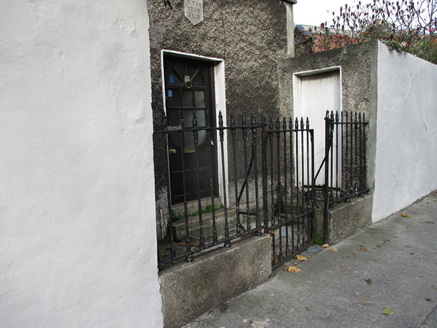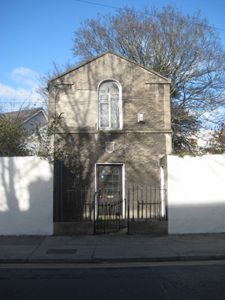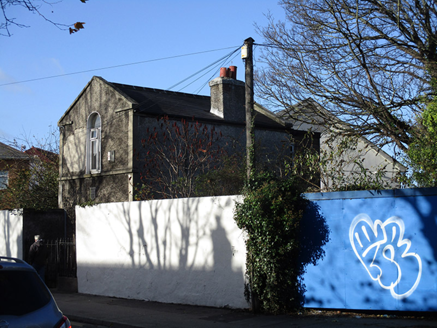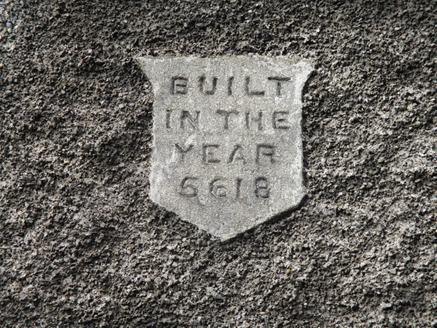Survey Data
Reg No
50120060
Rating
Regional
Categories of Special Interest
Architectural, Historical, Social
Original Use
Building misc
Date
1855 - 1910
Coordinates
317120, 236132
Date Recorded
30/10/2017
Date Updated
--/--/--
Description
Detached gable-fronted two-storey former gate lodge, built 1857, serving Jewish burial ground. Facing south, with single bay to street and two or three bays to long walls, with addition to rear, added 1906. Pitched slate roof, having cut granite copings to gables, open-bed pediment to front, red clay ridge tiles, replacement rainwater goods and rendered chimneystack to middle of east elevation; flat roof to addition. Pebbledashed rendered walls, front having render pilaster quoins and inscribed plaque reading 'Built in the year 5618'. Round-headed window opening to first floor of front elevation, having cut granite sill course, raised render reveal and timber casement window; square-headed openings to addition. Square-headed doorway to gable-front having raised render reveals, replacement glazed timber door, and two cut granite steps. Single-leaf cast-iron gate having matching railings on rendered plinth wall enclosing small yard to front. Rendered wall enclosing burial ground to rear with square-headed doorway to east side of front yard, with timber battened door.
Appraisal
This modest gate lodge provides subtle interest to the streetscape. Its simple form is enhanced by the few, but well-proportioned, openings. The well-known and highly unusual date plaque employs the Hebrew calendar, and refers to the equivalent of the Christian year 1857, lending important contextual interest to the structure and to the cemetery that it served. The gate lodge was built to provide security for the burial ground, as the resident caretaker would deter any potential grave robbers or vandals. The first members of the Jewish community to settle north of the River Tolka resided on Annadale Avenue in the early eighteenth century, coinciding with the increased industrialization of the area. In 1718 the plot for the graveyard was leased from Chichester Philips of Drumcondra Castle, and in 1748 it was purchased by the Jewish community with the assistance of the London synagogue, and was their burial ground until the last burial took place in 1958.







